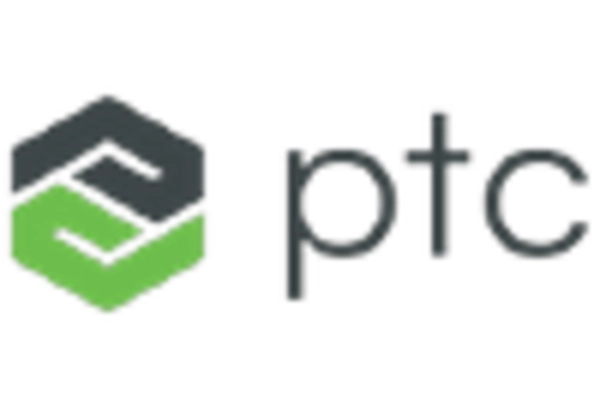Sustainability Initiatives
Sustainability initiatives are becoming increasingly critical within the Metal Fabrication Software Market. As environmental regulations tighten and consumer preferences shift towards eco-friendly products, manufacturers are compelled to adopt sustainable practices. Metal fabrication software that facilitates recycling, waste reduction, and energy efficiency is gaining traction. For example, software solutions that optimize material usage can significantly minimize scrap rates, aligning with sustainability goals. The market for sustainable manufacturing solutions is projected to grow at a rate of 8% annually, reflecting a broader industry shift towards environmentally responsible practices. This trend is likely to drive the development and adoption of software that supports sustainable metal fabrication processes.
Customization and Flexibility
Customization and flexibility are increasingly vital in the Metal Fabrication Software Market as manufacturers strive to meet diverse customer needs. The ability to tailor software solutions to specific operational requirements allows companies to enhance their competitive edge. This trend is particularly relevant in industries where bespoke solutions are essential, such as in custom machinery and specialized components. The demand for customizable software is reflected in the market, with a projected increase in sales of tailored solutions by approximately 10% over the next few years. As businesses seek to differentiate themselves, the emphasis on flexible metal fabrication software that can adapt to varying production demands is likely to intensify.
Integration of Advanced Technologies
The integration of advanced technologies such as artificial intelligence and machine learning into the Metal Fabrication Software Market is transforming traditional fabrication processes. These technologies enable predictive analytics, which can optimize production schedules and reduce downtime. For instance, AI-driven software can analyze historical data to forecast equipment failures, allowing for proactive maintenance. This capability not only enhances operational efficiency but also contributes to cost savings. The market for AI in manufacturing is expected to reach USD 16 billion by 2025, indicating a robust growth trajectory. As manufacturers seek to leverage these technologies, the demand for sophisticated metal fabrication software that incorporates AI and machine learning functionalities is likely to increase.
Rising Demand for Precision Engineering
The Metal Fabrication Software Market is experiencing a notable surge in demand for precision engineering solutions. As industries increasingly prioritize accuracy and efficiency, the need for software that can facilitate precise measurements and tolerances becomes paramount. This trend is particularly evident in sectors such as aerospace and automotive, where even minor deviations can lead to significant operational issues. According to recent data, the market for precision engineering tools is projected to grow at a compound annual growth rate of approximately 7.5% over the next five years. This growth is likely to drive the adoption of advanced metal fabrication software that can meet these stringent requirements, thereby enhancing overall productivity and reducing waste.
Growth of E-commerce and Online Platforms
The growth of e-commerce and online platforms is significantly influencing the Metal Fabrication Software Market. As more businesses transition to online sales models, the need for software that can streamline operations and integrate with e-commerce systems becomes critical. This shift is driving demand for metal fabrication software that offers features such as inventory management, order processing, and customer relationship management. Recent statistics indicate that e-commerce sales in the manufacturing sector are expected to grow by 15% annually, underscoring the importance of digital solutions. Consequently, metal fabrication software that can seamlessly integrate with e-commerce platforms is likely to see increased adoption, enhancing operational efficiency and customer satisfaction.


















Leave a Comment